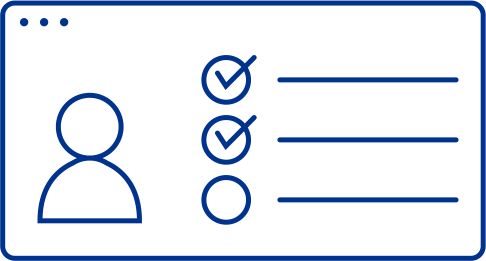It has been over a year since Canada’s enhanced mandatory disclosure rules (MDR) were enacted via Bill C-47 on June 22, 2023. Taxpayers and their advisors are taking steps to address the continued impact of these broadly legislated disclosure requirements.
What are mandatory disclosure rules (MDR)?
The MDR regime consists of three types of transactions: reportable transactions, notifiable transactions, and uncertain tax treatment.
The purpose of the MDR is to improve the collection of relevant information to help the Canada Revenue Agency (CRA) effectively and efficiently respond to tax risks through informed risk assessments, audits, and changes to legislation.
The enhanced MDR regime is extremely broad. This regime expanded the previously existing “reportable transactions” requirements and introduced new reporting requirements for “notifiable transactions” and “reportable uncertain tax treatments”.
Reportable transactions
In general terms, a transaction is considered a reportable transaction if it meets one of the three hallmarks: contingent fee arrangement, confidential protection, or contractual protection, and if one of the main purposes of the transaction is to obtain a tax benefit.
Notifiable transactions
Notifiable transactions include both transactions that the CRA has found to be abusive, and transactions identified as transactions of interest (that is, where more information is required to determine if a transaction is abusive).
The CRA has the authority to designate, with the concurrence of the Minister of Finance, transactions or series of transactions for purposes of the notifiable transaction rules.
To date, the CRA has designated five types of transactions and series of transactions as notifiable, effective November 1, 2023:
- Straddle loss creation transactions using a partnership
- Avoidance of deemed disposal of trust property
- Manipulation of bankrupt status to reduce a forgiven amount in respect of a commercial obligation
- Reliance on purpose tests in section 256.1 to avoid a deemed acquisition of control
- Back-to-back arrangements.
A transaction becomes a notifiable transaction if it is the same or “substantially similar” to the above designated transactions.
Uncertain tax treatments
An uncertain tax treatment is a tax treatment that an entity used or plans to use in its Canadian income tax filings for which there is uncertainty over whether the CRA will accept the tax treatment as being in accordance with tax law.
In general terms, this filing requirement is imposed on reporting corporations that report an uncertain tax treatment in their audited financial statements either by way of a tax provision or note disclosure in reference to the particular tax issue. These statements are prepared either in accordance with International Financial Reporting Standards (IFRS) or the country-specific Generally Accepted Accounting Principles (GAAP) relevant for public companies listed outside Canada (e.g., U.S. GAAP).
Who is an advisor?
Reporting obligations are also imposed on advisors in respect of a reportable transaction or notifiable transaction.
The term “advisor” is broad enough to include professionals beyond lawyers and accountants, such as bankers, insurance advisors or brokers, business advisors, and any person who, in respect of a transaction, provides directly or indirectly in any manner whatever, any assistance or advice with respect to creating, developing, planning, organizing and implementing the transaction.
Advisors are required to comply their own reporting obligations regardless of whether the same transaction has been reported by their clients or other reporting persons.
To mitigate non-compliance risks, it is crucial for advisors to establish a compliance system to exercise their due diligence.
Non-compliance consequences are far too serious to ignore
Taxpayers are required to disclose reportable transactions and notifiable transactions within only 90 days of the earlier of the day the taxpayer enters into the transaction or becomes contractually obligated to enter into the transaction.
There are consequences for failure to report, including significant penalties, extended reassessment period, and disallowed tax benefits.
Taxpayers are required to disclose uncertain tax treatments reflected in their financial statements at the same time that the reporting corporation’s income tax return is due.
A penalty will be imposed for each failure to report. For example, if the same uncertain tax treatment is reflected in a corporation’s financial statements for multiple years, failing to report this uncertain tax treatment would result in the corporation being charged a penalty for each taxation year.
How can taxpayers and advisors meet the enhanced rules of this new regime?
Lack of awareness of the MDR rules is one of the top issues resulting in non-compliance from both taxpayers and advisors. Education on the MDR requirements is the first step to mitigate penalties arising from failure to report.
There are certain legislative provisions from which taxpayers and their advisors may seek relief in cases where the CRA challenges a non-reporting position. Establishing a compliance system is critical to effectively demonstrate the exercise of due diligence.
KPMG can help
KPMG has developed comprehensive MDR tools that can help analyze whether reporting is required and streamline the reporting process. KPMG also offers services including:
- Customized training materials: We will develop and deliver customized training materials for frontline advisors to raise the awareness of MDR requirements
- Risk assessment: We will evaluate transactions and service offerings that are most likely to be impacted by MDR
- Customized job aids for advisors: We will prepare and deliver initial customized job aid for frontline advisors to identify transactions for escalation or further consideration, such as identifying simple red flags
- Collection system for completion analysis: We will implement a collection system within your organization to determine whether identified transactions are reportable or notifiable transactions, as well as provide a report on the results and documentation in the reporting package.
Insights and resources
Connect with us
Stay up to date with what matters to you
Gain access to personalized content based on your interests by signing up today
Connect with us
- Find office locations kpmg.findOfficeLocations
- kpmg.emailUs
- Social media @ KPMG kpmg.socialMedia




